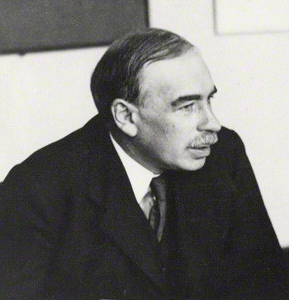 How would one do a Keynesian stimulus properly today? Remember, the preconditions for Keynesian stimulus to work are that it not overly aggravate bottlenecks (not send oil to $150/barrel, for example); that it not aggravate overused sinks (carbon); and that the money not pool uselessly at the top. Keynesian stimulus must create widespread demand. Further, in a world with bottleneck constraints, sink problems and overuse of even renewable resources, it should help resolve those problems.
How would one do a Keynesian stimulus properly today? Remember, the preconditions for Keynesian stimulus to work are that it not overly aggravate bottlenecks (not send oil to $150/barrel, for example); that it not aggravate overused sinks (carbon); and that the money not pool uselessly at the top. Keynesian stimulus must create widespread demand. Further, in a world with bottleneck constraints, sink problems and overuse of even renewable resources, it should help resolve those problems.
Create Widespread Demand While Mitigating Sinks and Bottlenecks
1) Every federal building in America to go to energy neutral at least, or energy surplus ideally. That’s a massive stimulus.
2) In order for a house to be “conforming” and thus qualify for federal loan guarantees it must be energy neutral at least, as well.
3) A subsidized waiver system for retrofitting civilian buildings to be energy neutral—the cost of which is paid back by savings, so homeowners pay nothing, and commercial guys pay little. You can create a securities market for the certificates to bring private money online.
4) No mortgage can be conforming if any laws or homeowner agreements forbid the homeowner from growing their own food or selling it.
5) All new condominiums and apartment complexes must provide for growing food, through hydroponics or other means. Without it, they are, again, not conforming or the income from them gets taxed higher.
6) Substantial tax breaks for telecommuting. (See section below for how to make corporations do this.)
7) Move to a high speed rail system, subsidize electric cars with certificates (buy one while turning in a non-electric car and the government pays half), and so on.
These actions give you a massive renewable buildout, fast. Most of the jobs are domestic (even if panels are bought from China). They reduce energy use significantly, including peak turbine oil use and they enable people to grow food when needed, reducing pressures on various carbon sinks and renewable resources.
(I am fundraising to determine how much I’ll write this year. If you value my writing, and want more of it, please consider donating.)
Reform the Tax System
8) Move back to high marginal income tax rates.
9) Move back to high marginal corporate tax rates, to force companies to start spending their money and to make tax incentives work again: at 80% tax rates the corporations will be very happy to do whatever the government wants them to do in exchange for a 20% tax rebate.
10) Reform the tax code so money earned in the US cannot be moved overseas to avoid said taxes.
11) Make stock buybacks rare (again, to force corporations to spend their money or give it to shareholders).
12) A punitively high inheritance tax on any inheritance over 5 million or so, with no loopholes.
13) A carbon tax. Imports from any country will be charged that carbon tax at the rate of their carbon expenditure. Countries which will not allow proper inspections to determine said tax rate will be hit with the highest rate.These actions both stop money from pooling at the top and bring money off the sidelines. The rich can spend it or have it taxed away.
There are many other things one could (and should) do (property taxes being at least partially based on carbon production and energy use, for example), this is just an outline and high-points. It doesn’t include “how to get there”, but it is important for people to know that there are other options that would work other than status-quo neo-liberalism. If people don’t believe better worlds are possible, they won’t fight to get to those worlds.
Nor would this program work for every country, it requires a powerful country with the ability to impose conditions. It would, however, work for the US.

